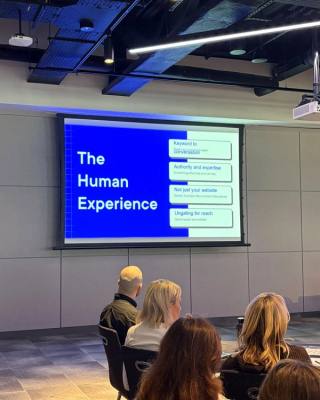The time has come. That time when a company’s leaders begin to explore the idea of escaping the confines of organic marketing reach and implement an advertising strategy. So let's talk about digital ads, and more specifically, paid search and social media. We want to guide you through the three things you need to consider before spending a cent on sponsored ads.
Most likely your social media following is probably smaller than you would like or your followers are already loyal converts and current customers. To expand your reach, paid online ads are one of the quickest ways to generate quality leads for your business and click-throughs to your website. Whether it is an Instagram carousel or a sponsored ad on Google, for a website this is where the sales funnel starts. And the consumer’s journey often begins.
While it’s very easy to create a campaign, it’s even easier to waste your money on clicks that aren’t generating the right leads for your business. Before you start diving into the world of paid advertising, ask yourself these questions:
1. What are your business goals?
The first place you need to start, ask yourself: what are you looking to achieve from this campaign? Lead generation? Market research? Awareness? Not only will the content of your ads differ hugely based on your goals but how you measure their performance will also.
Once you decide on your goals, and the services you want to advertise, then kill your darlings – one of the biggest mistakes marketeers make is running campaigns for all their services. Often, businesses may not have the budget to advertise for all their offerings. So instead focus on one or two facets that produce the highest margins, and grow them.
The great thing about paid traffic is that it guarantees an audience for your message. And once you communicate this, they are much more likely to take the desired action than if you only used organic reach or word of mouth. So what would successful paid traffic results look like for your business? Whether it is money in the bank or bums on seats, we can measure that. And as you well know now, we at Kooba are expert measuricians.
So how will you know if your initial investment is getting the expected return? We use tools like Google analytics to tell us all sorts of things. This star player of the analytics world is user-friendly once you know what you’re doing. It can tell you if there is an appetite for the product or service that you are trialling. We will be able to AB test the business names you are deciding between and which one resonates the most. It will also tell us how to improve our campaigns and what to tweak to ensure our paid communications are being as effective as possible and making every dime work for you.
Other tools will help us to yield the results you are looking for: Hotjar and even Instagram have their own metric analysis. When we have as much information as possible we can make sure our paid search and socials are as effective as they can be, helping you to reach your goals. Knowledge is power after all.
2. What action do you want from your target?
With your paid ads, you’re not just paying for site visits – you most likely want to be paying for good leads. So once you get someone to your site, do they know where to go? It is imperative that the user journey is intuitive. Do they know what they need to click? Is it straightforward and simple? Making sure that the user experience is top notch will help you to encourage the desired action from your target market.
Of all the mistakes people can make with pay-per-click marketing, one of the most common is creating ads with no clear path to the action the visitor should take. For most companies doing business online, the path to purchase is not that obvious. So what are the steps that it takes for someone to go from clicking your ad to your company seeing a return on your investment? It can be as simple as an immediate purchase, or as complicated as a 12-month, 5 touch-point advertising campaign. The point is, if you don’t know the journey you want the user to take to buy your service, how will they?
3. Where are your target audience's eyes?
There is a tendency for advertisers to stick their message out into the world and presume that the right people will see it. But you need to put yourself in your targets’ shoes. Remember, you are not your user. Start from the bottom up – you need to understand their culture. Their wants, needs, hobbies, schedules. What do they care about and most importantly where are their eyes?
What are they watching, reading, streaming? Literally where on the internet are they looking? Once you know that, show up there.
When you know your target market inside and out, you know what pricks up their ears and what they will pay attention to. You will know what platforms they are using and who they are following. You will know what they are Googling (or Yahooing) and what words they are typing into the search box.
Armed with all of this ammunition you will then have more cut through with paid ads that resonate with your audience. Ads that affect them and provoke them to follow your call to action.
It is tempting to want our companies to be present on every platform but do you truly understand the ins, outs and unwritten etiquette of every platform? The learning curve can be steep on each social network and it might not even be the right hang out place for your audience. Really think about it – is Tik Tok actually an appropriate place for your insurance company to be? Probably not.
Don’t spread your resources too thin either. One thing is for sure; you need to invest more than money into advertising. It is a time consuming and energetic endeavour. Conserve your energy and focus it in the right places. Pick one platform and master it. Then move onto the next, only if necessary.
So once you’ve decided to invest in paid search and social media marketing make sure you ask yourself if your business goals are at front of mind, what action you want from your target audience and where they are showing up. Once you know these things you will be able to measure metrics and keep improving iterations of your paid online adverts ensuring they are communicating the right message, in the right place to the right person. Phew
And remember, be patient, it can be a little tricky to get into the swing of things, and if you need a little additional help with it all, we’re here. Get in touch with our team of digital experts and allow us to guide your success.









